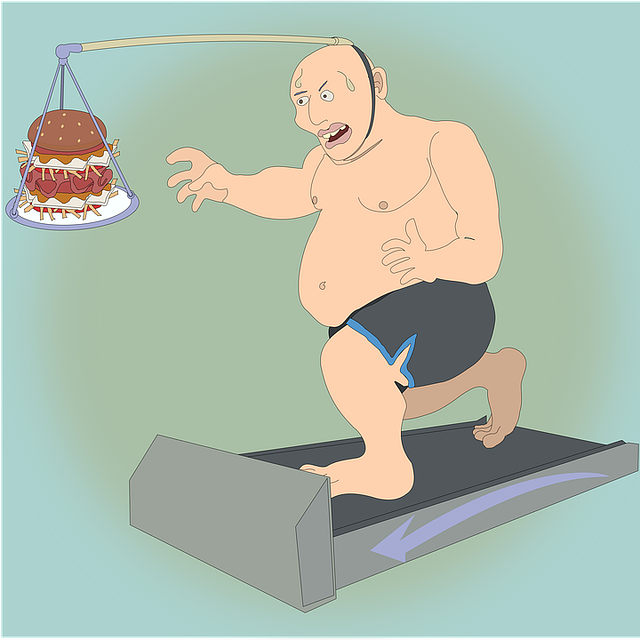The Long and Often Gory History of the Treadmill

Today’s Treadmills Hide a Far More Sinister Past
Today, a treadmill is a popular piece of exercise equipment ideal for use at home or in the gym. Millions of people enjoy brands including NordicTrack, ProForm and JLL, enjoying cardiovascular workouts every week. Look back into the history of the treadmill, and you will quickly find that there were many times when these machines were used for completely different purposes. When you find out the long and often gory history of the treadmill, that workout will never quite be the same again!
Back in Time: Ancient Treadmills
There is evidence to show that treadmills first came into being during the height of the Roman Empire. These were used for additional power to lift heavier weights. The treadmill would effectively replace the winch in the cranes, with the men walking within the wheel able to lift more weight due to the large diameter of the wheel.
Horse treadmills were introduced in the 1800’s. It became apparent to farmers that machines that were powered by water or wind could be unreliable, so thoughts turned to harnessing the power of horses. These horse treadmills captured the energy created by the constant motion of the horses. This led to the term ‘horse power,’ which is routinely used today to describe the unit of power for vehicles, one horsepower the equivalent of 33,000 foot-pounds of work.
The success of these horse treadmills led to smaller contraptions for farm animals such as goats and sheep, and even dogs were put to use. These smaller treadmills were routinely used to grind stones, churn butter and other more lower energy jobs.

Treadmills for Punishment
In 1817, William Cubitt, an engineer by trade, became inspired, by the sight of prisoners sitting idly around, to create a new ‘penal’ treadmill. These contraptions would feature large wheels fitted with steps, with any prisoners sentenced to hard labour required to walk up these steps to keep the treadmill rotating. The treadmills were large enough to house several men at once and would feature a horizontal handrail for stability. In some cases, the treadmills would feature partitions, making the prisoners isolated and only able to see the wall in front of them. The Prison Act of 1965 would see every male prisoner over the age of 16 sentenced to hard labour spend three months in ‘first class’ labour, which consisted mainly of this treadmill ‘torture’.
In some cases, these treadmills were designed to grind ‘air’, with no practical use at all. The thinking at the time was that they would “reform offenders by teaching them habits of industry.”
The mill at Brixton Prison did have a practical use as it ground grain to supplement a nearby windmill. This treadmill gained notoriety for cruelty, with prisoners starting ‘work’ at 5.30am, with the machine causing a series of broken bones and in some cases, deaths. The contraption was known as the ‘shin-scraper’ by inmates.
Penal treadmills were eventually abolished by the Prisons Act in 1889 which recognized that labour should have a constructive purpose within prisons.

Treadmill History: The Move to Exercise Treadmills
Not so long after the ‘torture’ based treadmills were, a patent for a ‘training machine’ treadmill was introduced in the US in 1913. Then in 1952, a treadmill was designed that could help diagnose both heart and lung diseases. A medical study on the benefits of aerobic exercise by Kenneth H. Cooper in 1968 provided a good argument to have devices such as treadmills, exercise bikes and other gym equipment in the home.
Today there are treadmills in many homes, throughout gyms, in training centres, in medical facilities, they are used by the police and the army and there are even treadmills in use at NASA. In some offices today, there are even treadmill desks, so employees can walk whilst doing their work.
Advantages and Disadvantages of Treadmills
There are many advantages to using a treadmill. They can be softer underfoot, as you will always be running on a level surface, meaning fewer injuries. You can set them to a certain pace, ensuring consistency in your running or walking. Many machines will track your heart rate, calorie consumption, distance and speed as you train. You can also set programs to simulate different terrains, with tougher uphill and easier downhill sections. Treadmills can be a great idea if watching TV or reading a book, giving you exercise where you wouldn’t usually be training.
Personally, I love listening to podcasts while I run.
In terms of disadvantages, runners who are used to training outdoors can find treadmills uninspiring, as you’re not dealing with the natural terrain, the elements and getting out there with nature. There is a cost involved in running a treadmill at home. The initial outlay of the treadmill has to be considered, as well as the electricity costs that they will incur and any repair work that needs to be done.
More Popular Pages this Month:


